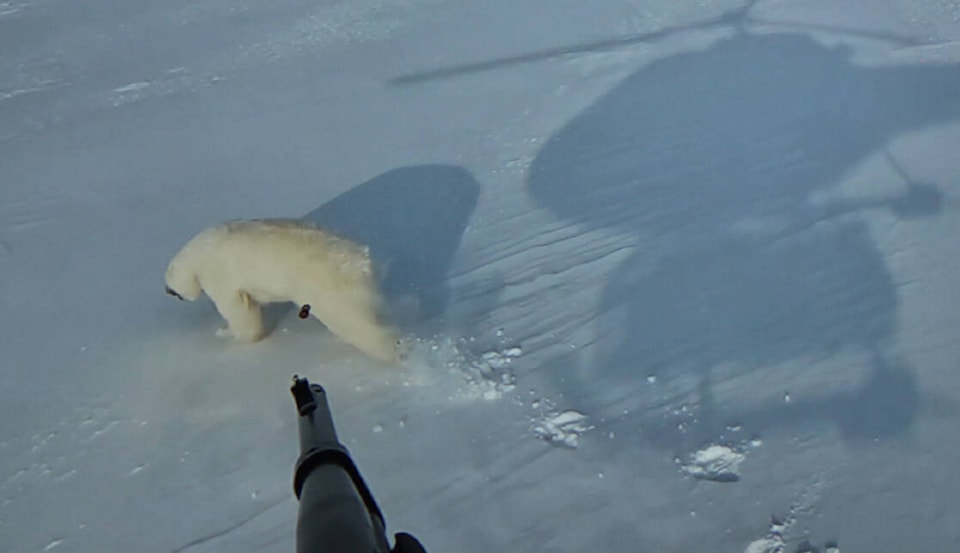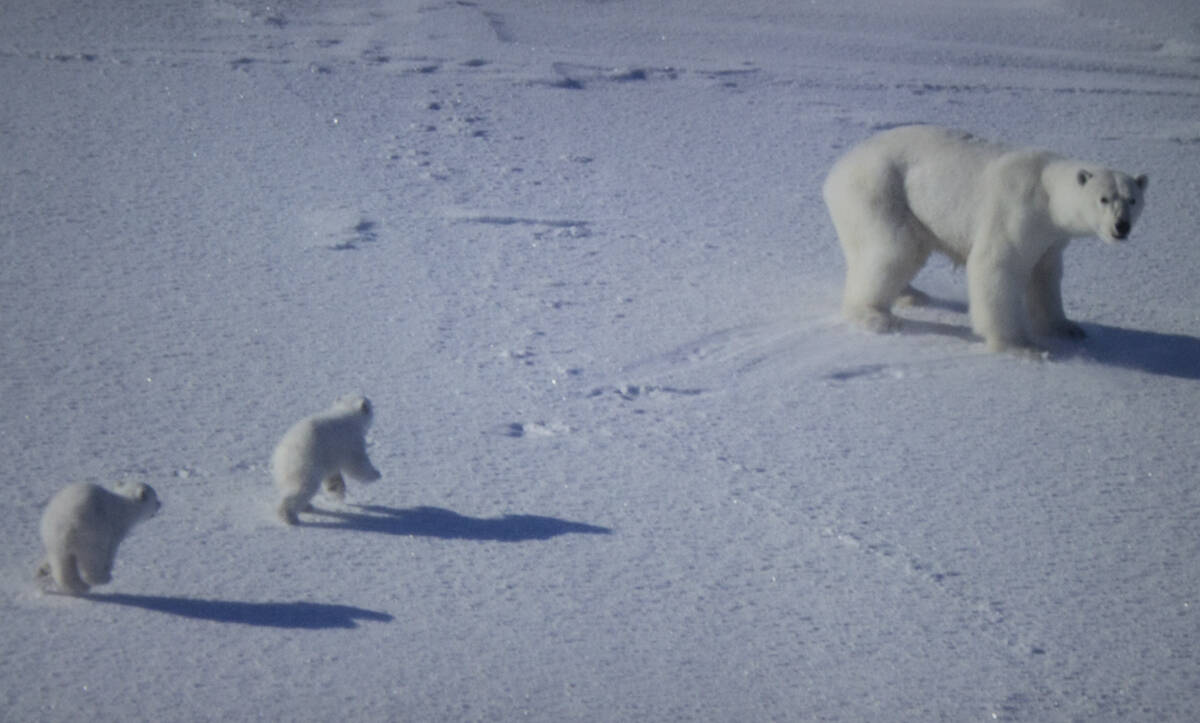
A mother polar bear is walking along the ice with her cubs when suddenly a huge flying beast appears on the horizon. The mother tries to direct her cubs away from the monstrosity as it comes closer. Suddenly, the mother feels a light sting in her buttocks and the monster flies off. The mother leads her cubs away.
When the bears have vacated the area, the flying beast — a research helicopter — lands near the site and a group of scientists hop out to retrieve the biopsy dart they shot the bear with. The dart removes a small tissue sample that can be used to determine the bear’s DNA, sex, health and a number of other factors.
“The main part we are using is the skin,” said bear biologist Faye d’Eon-Eggertson during an Aurora Research Institute speaker series presentation July 12. “That’s what you can send in for DNA analysis. We can’t do that in-house, we don’t have a genetics lab here in Inuvik, so we send those down to southern Canada. They can give us some DNA and also tell us the sex of the bear.
“Polar bears move quite far, they can move from Alaska to Canada. We’re obviously not seeing every bear — it’s a real big ocean.”
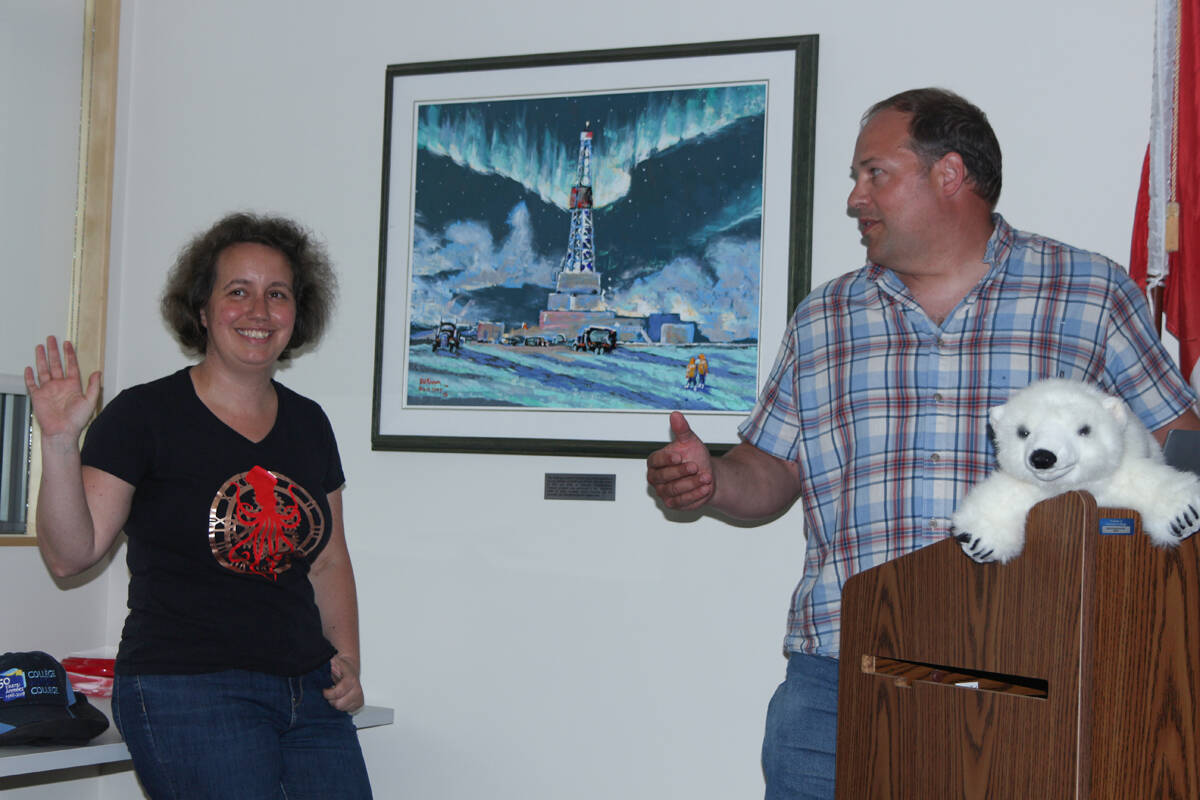
A five year study to estimate the polar bear population in the South and North Beaufort Seas wrapped up this year and scientists are crunching the numbers on what they’ve found.
In the interim, d’Eon Eggertson and fellow bear biologist Steve Baryluk explained how they go about studying the largest living terrestrial predator on Earth.
“Once you get a crew together, you start flying around and looking for bears,” said Baryluk. “Once we find the bears, the next thing we have to do is dart them. We’re basically trying to dart all the bears we encounter, except for the cubs less than a year old because they’re small. As long as at least a year old, we attempt to dart every bear, assuming conditions are safe.
“This is not the traditional type of work in chemically immobilizing the bear. We’re not tranquilizing them and there’s no drugs involved. All we’re doing is cutting out a small piece of skin.”
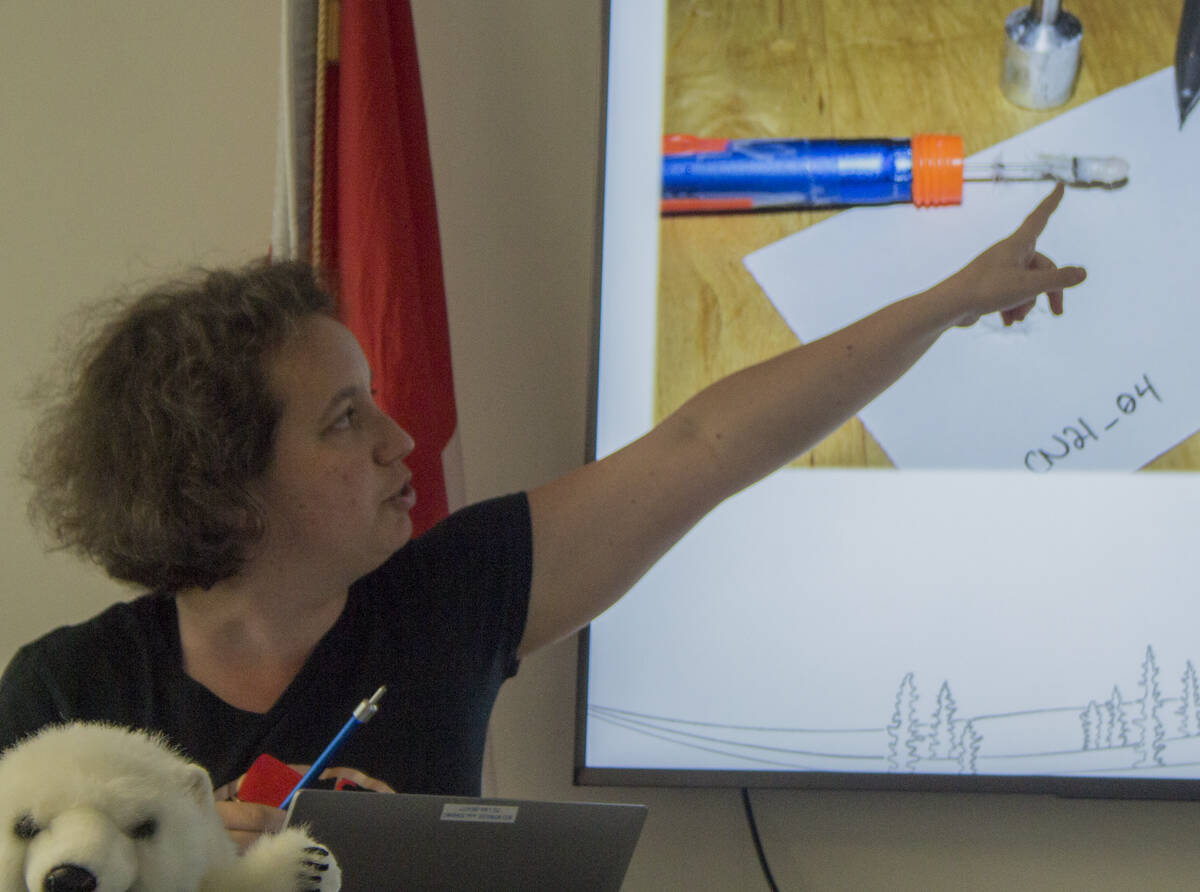
There are 19 different populations of polar bears on the planet, 13 of which live within Canada. Up to 2022, the research study has counted 314 bears — split evenly among males and females. Most of those bears are new to science, 288 of the bears surveyed up to 2022 had not been identified in previous studies.
To find these bears, researchers first assemble a team and a helicopter. Then, they wait until the bears come out of their dens in the spring. Over the five year survey, three helicopter teams covered the Canadian Arctic and a lone team took the Alaskan coast, setting out at the end of March each year. Each team consists of one pilot, two biologists and a community field worker. Helicopter pilots must undergo extensive training for flying over the Arctic ice and pursuing wildlife. For safety reasons, helicopters do not fly over the open water.
Research methods were refined as the years progressed. The first year, researchers tried to cover a wide area and had less luck finding bears. In later excursions, they focused on more specific areas, particularly along the open ocean which seemed to be the bears preferred stomping grounds.
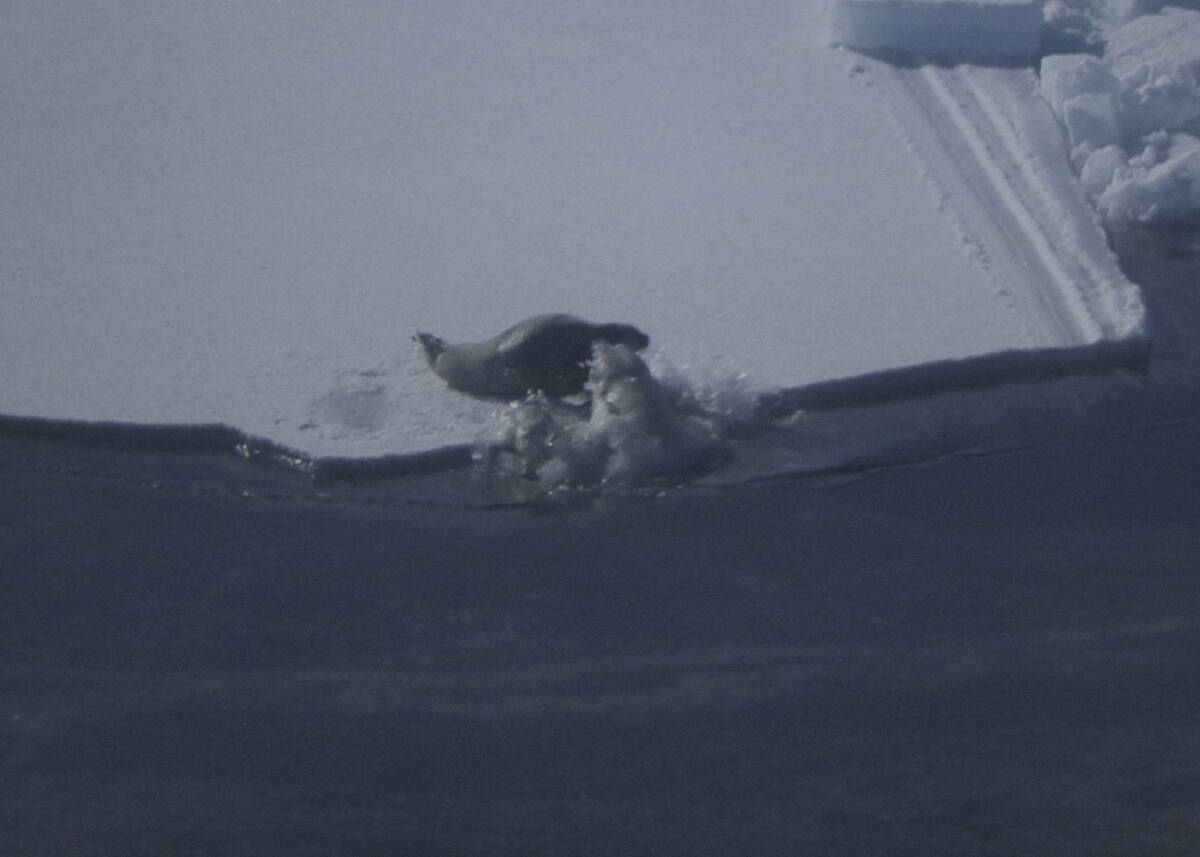
“We didn’t find a lot of bears on solid ice,” said Baryluk. “Most were near the ice edge.”
Usually the first sign of a bear is tracks. Once a bear is located, the researchers do their best to dart it from the air, flying 15 to 20 feet over the ground. Bears are only darted if the situation is safe for the bear, the ice is sturdy enough to land on and the dart can actually be retrieved after the fact. Darts are marked with GPS trackers, so the researchers aren’t just looking for a black dot on white ice. Biologists also collect fecal samples if available, since a great deal of information about the health and DNA of the animal can be ascertained from the waste product.
Pursuits of bears can only last a maximum of 2 minutes for a bear or 5 minutes for a family. If the job is done right, a pursuit lasts 20 seconds. If the bear appears to be fatigued, the researchers will back off. Biologists also have precautions to not break up families, as inexperienced mother bears will often abandon their cubs if they panic. Typically a female will have a litter of two to three cubs and usually only one will make it to adulthood. That’s assuming a male bear doesn’t kill the cubs himself, which causes females to go into heat.
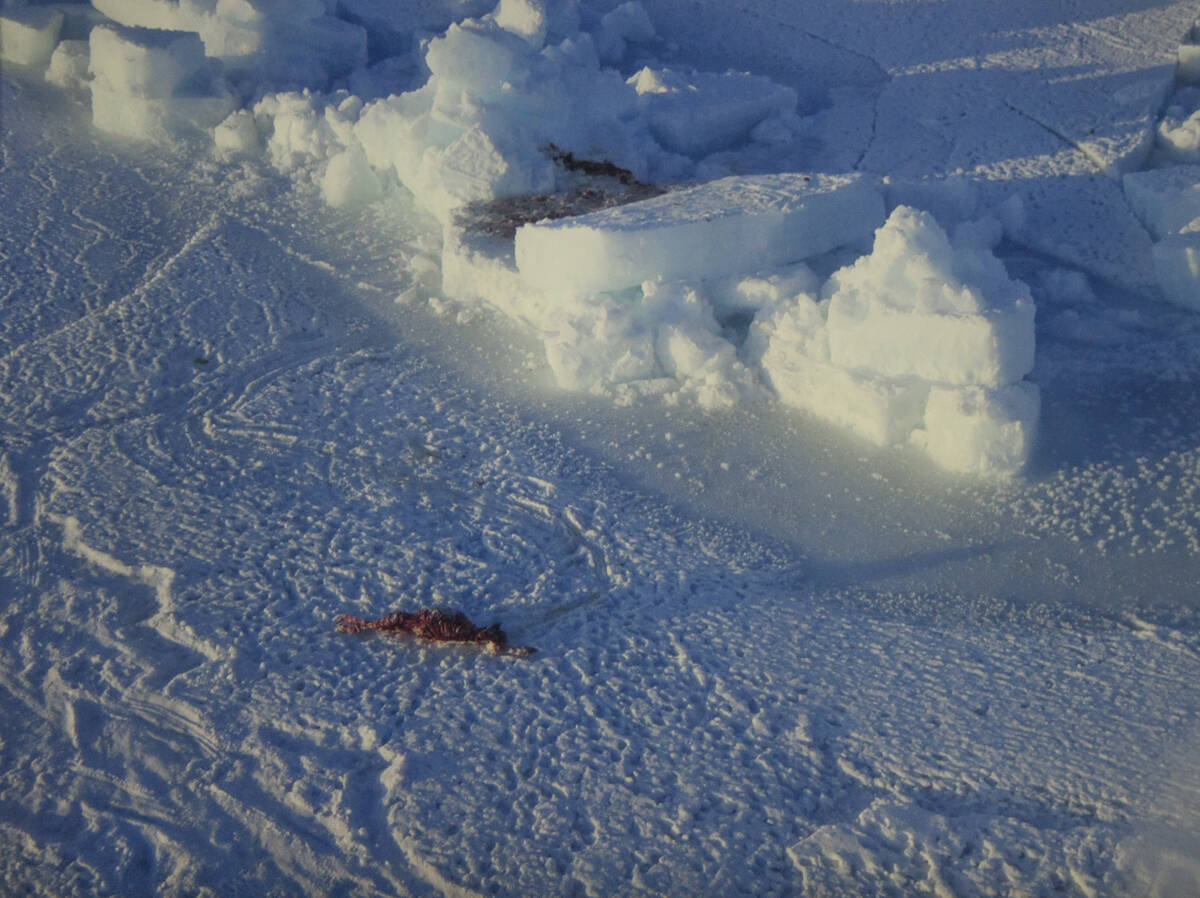
Now that the survey is complete, the samples have been sent to a laboratory further south for detailed analysis. Previously tagged bears are noted and the results can take several months to complete. Once the data is in, the combination of biopsies, hunters harvest data, traditional knowledge, as well as movement data and survival estimates, are put together into a multi-state model to determine the probability bears will still be around the next survey.
Though a five year study, research was postponed in 2020 because of the Covid-19 pandemic.
Research goals for the study were informed by recommendations from the Inuvialuit-Inupiat Polar Bear Joint Commission, which was one of the first user groups to establish a management plan for the bears.
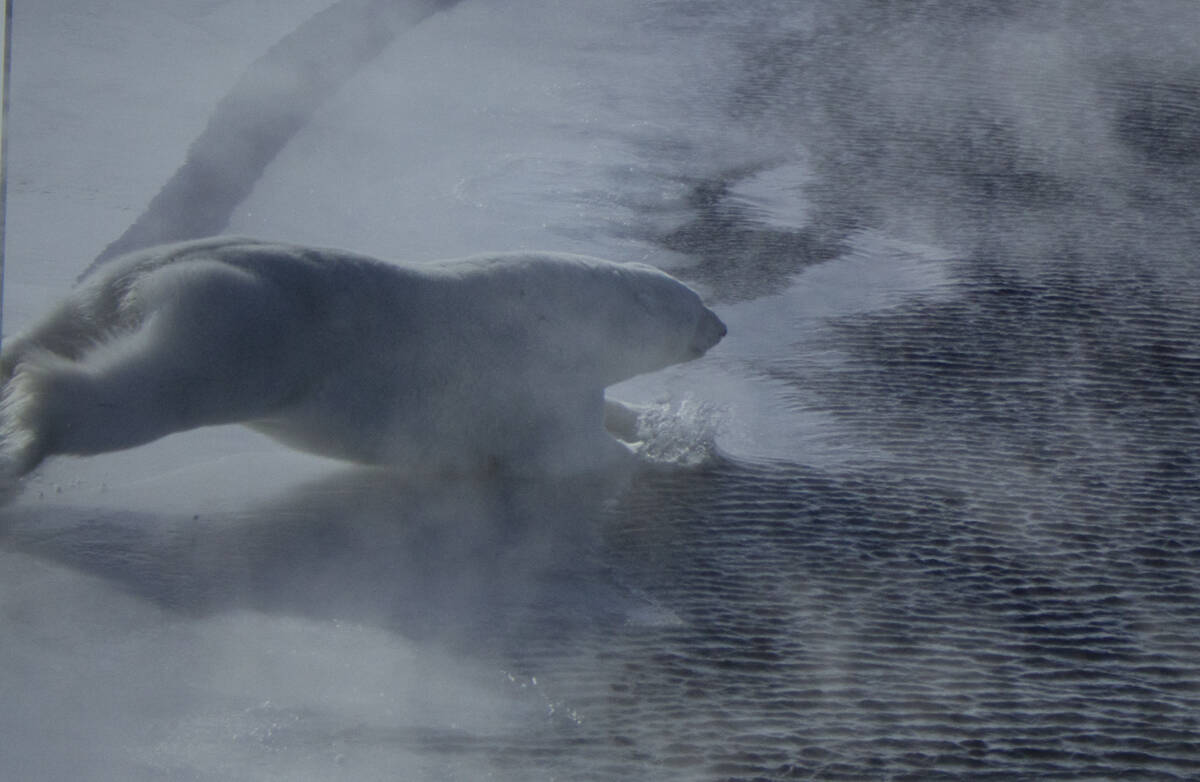 A bear dives into the Arctic Ocean. Photo courtesy Department of Environment and Climate Change
A bear dives into the Arctic Ocean. Photo courtesy Department of Environment and Climate Change
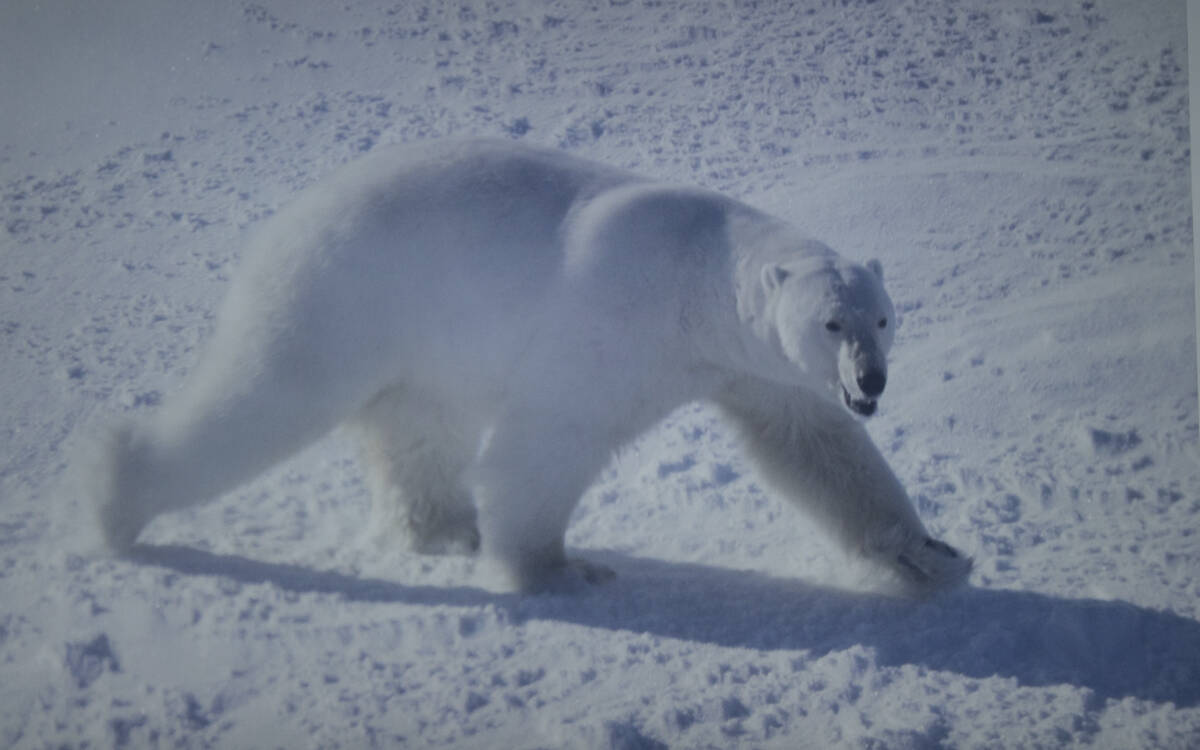 A bear on the prowl. Photo courtesy Department of Environment and Climate Change
A bear on the prowl. Photo courtesy Department of Environment and Climate Change
 A polar bear looks up at the helicopter as it makes its rounds. Photo courtesy Department of Environment and Climate Change
A polar bear looks up at the helicopter as it makes its rounds. Photo courtesy Department of Environment and Climate Change
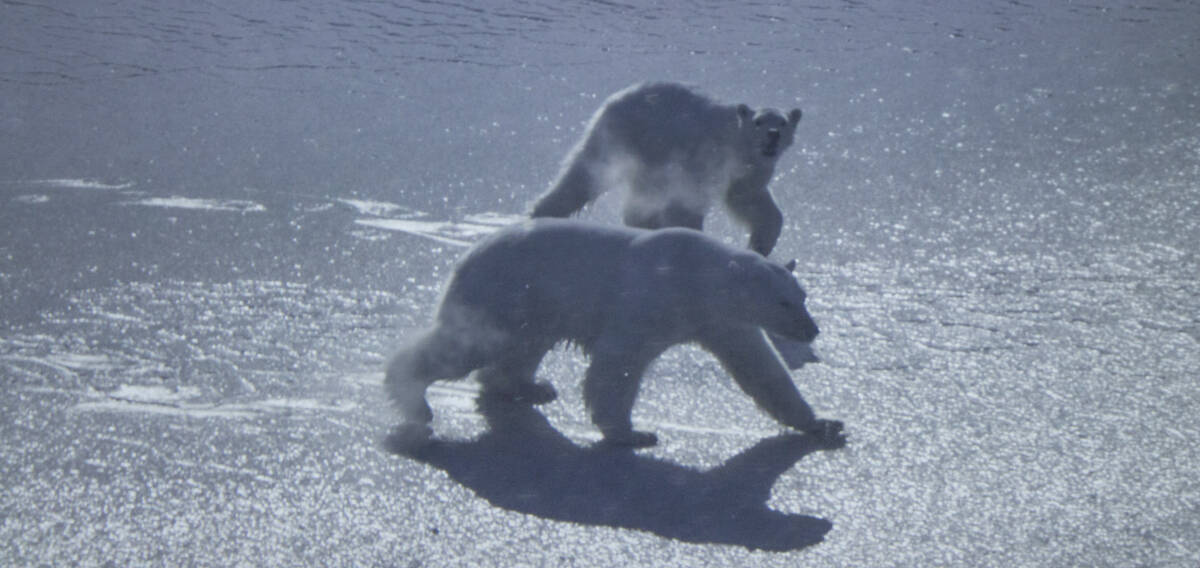 Two bears wander the ice together. Photo courtesy Department of Environment and Climate Change
Two bears wander the ice together. Photo courtesy Department of Environment and Climate Change
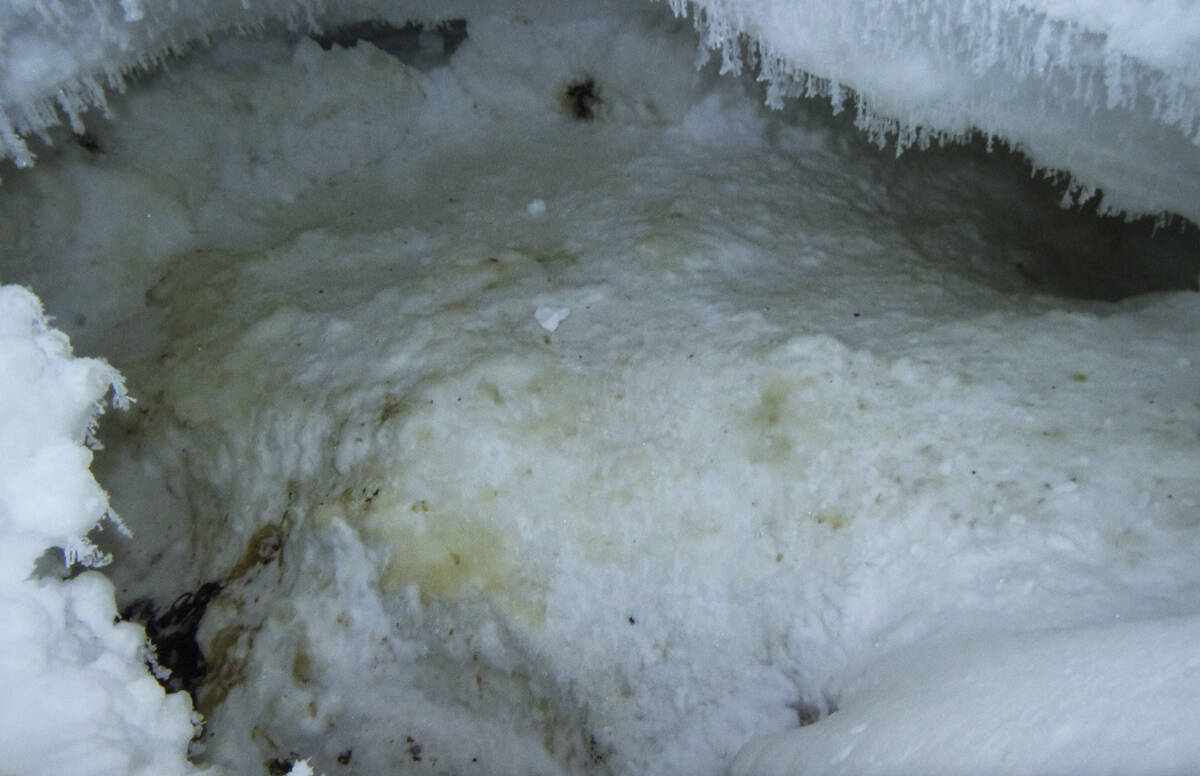 Inside a mother bear’s den, with sleeping area on the right and a lavatory on the left. Photo courtesy Department of Environment and Climate Change
Inside a mother bear’s den, with sleeping area on the right and a lavatory on the left. Photo courtesy Department of Environment and Climate Change
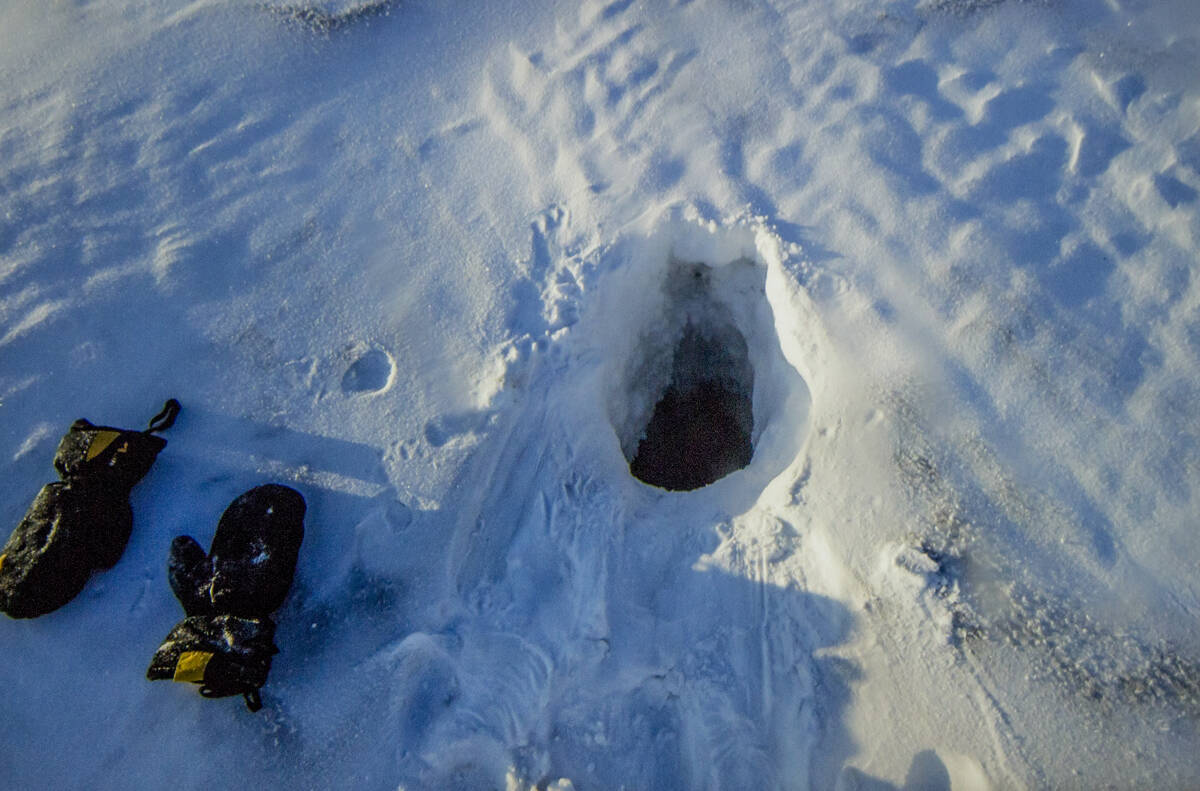 The entrance to a polar bear den — smaller than you would expect. Photo courtesy Department of Environment and Climate Change
The entrance to a polar bear den — smaller than you would expect. Photo courtesy Department of Environment and Climate Change
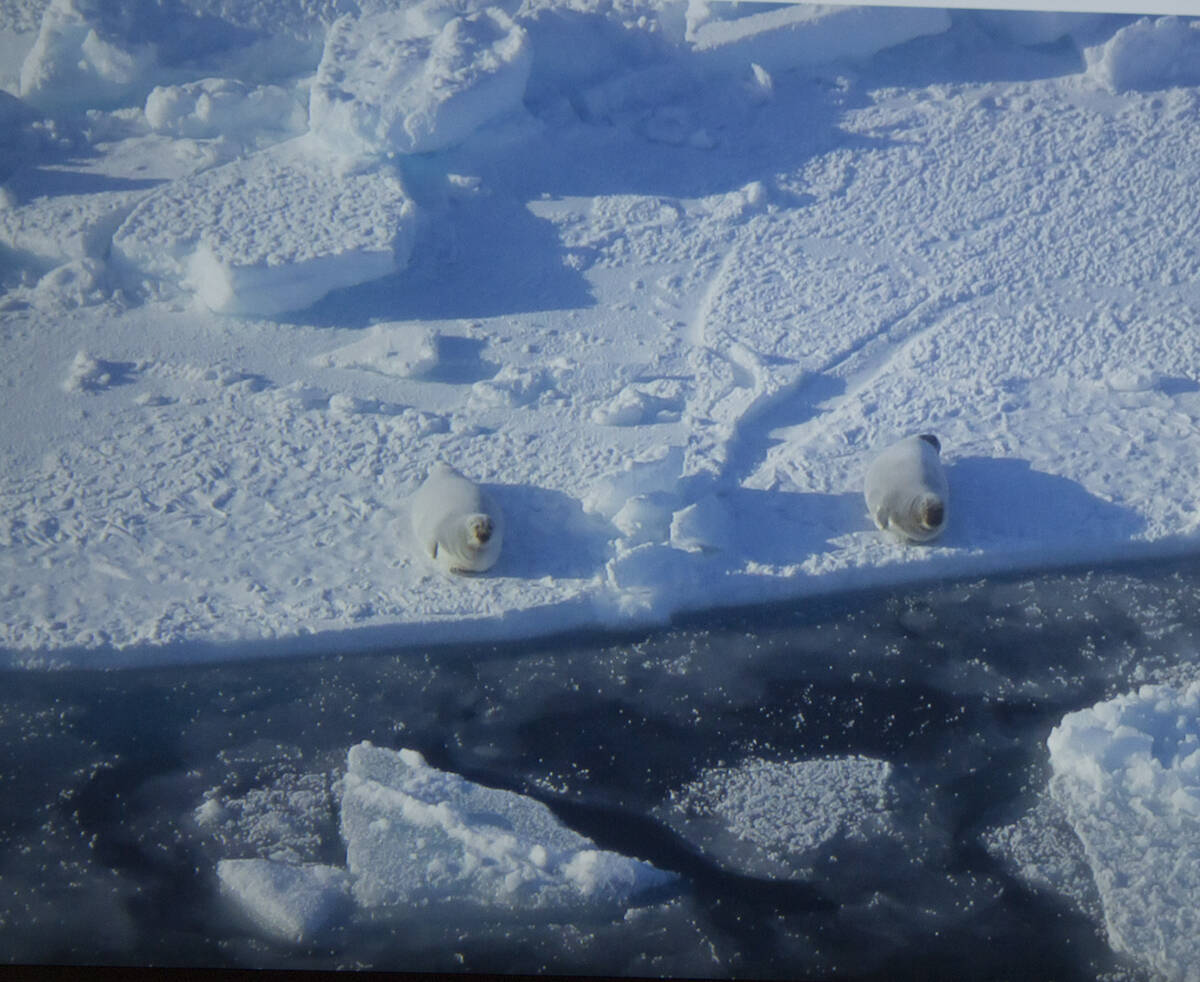 Two seals look at the helicopter while sunning themselves on the ice. Photo courtesy Department of Environment and Climate Change
Two seals look at the helicopter while sunning themselves on the ice. Photo courtesy Department of Environment and Climate Change
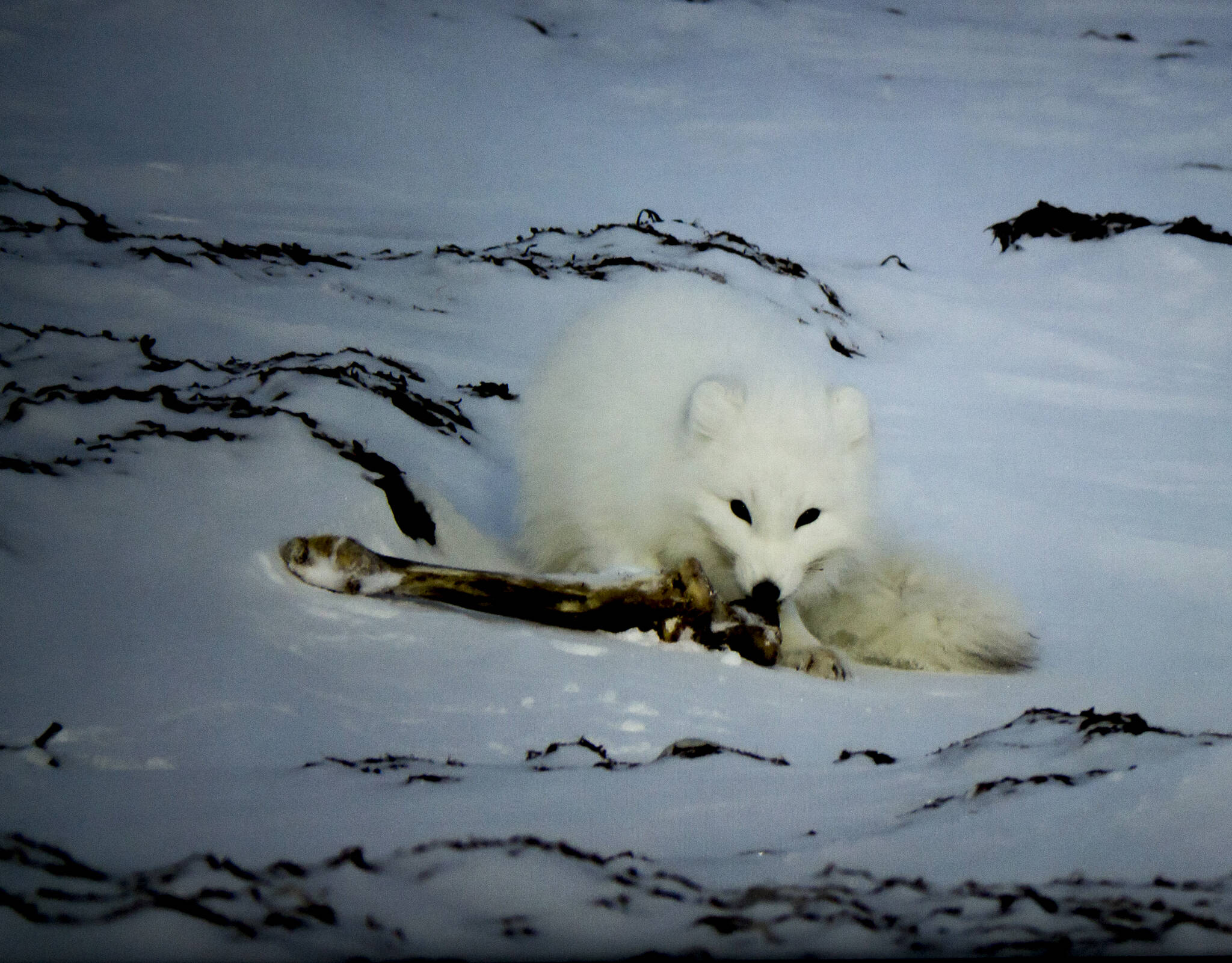 An Arctic Fox chews on a bone, an example of some of the other critters spotted during field work. Photo courtesy Department of Environment and Climate Change
An Arctic Fox chews on a bone, an example of some of the other critters spotted during field work. Photo courtesy Department of Environment and Climate Change
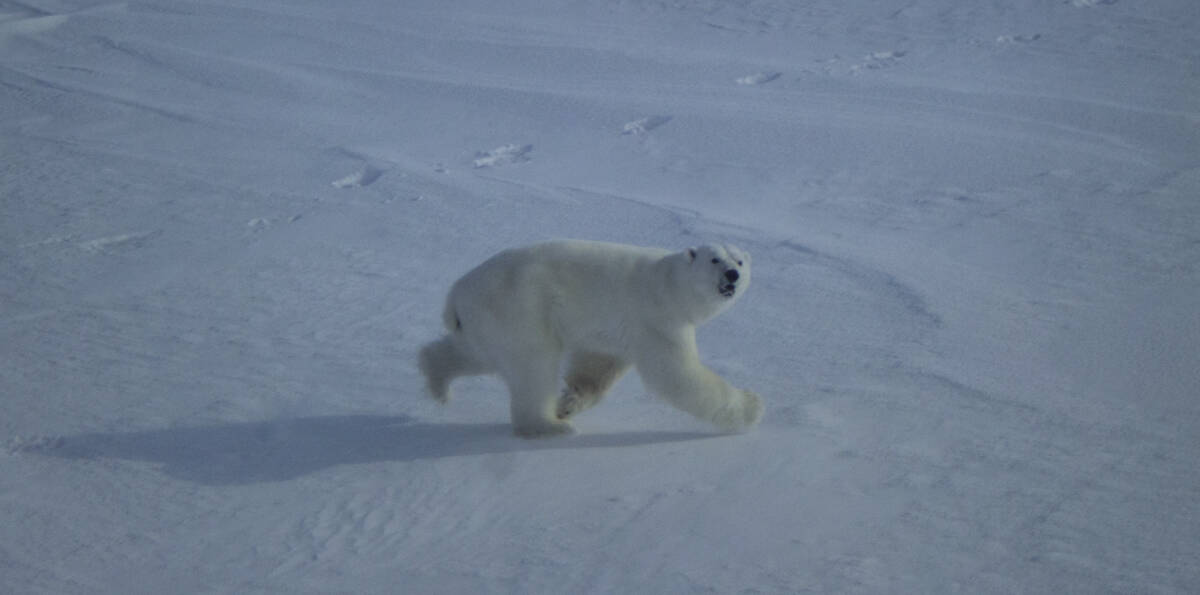 A bear runs parallel to the helicopter. Photo courtesy Department of Environment and Climate Change
A bear runs parallel to the helicopter. Photo courtesy Department of Environment and Climate Change
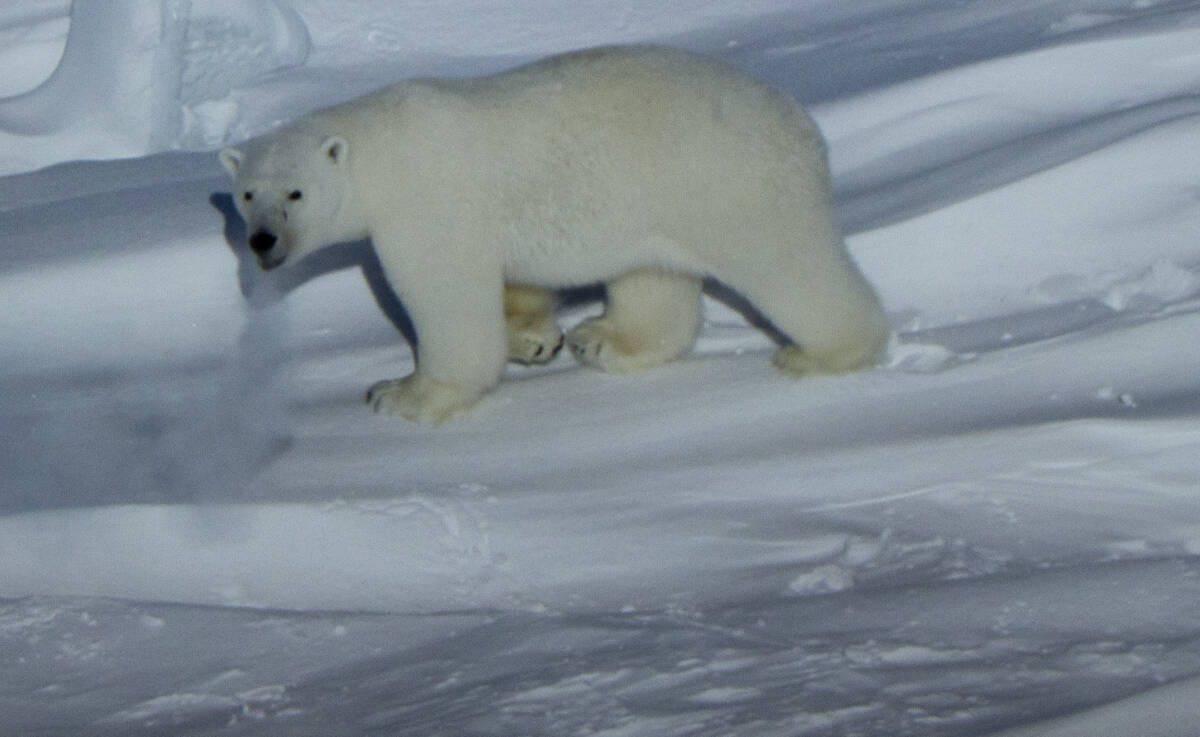 A polar bear exhales while posing for the camera. Photo courtesy Department of Environment and Climate Change
A polar bear exhales while posing for the camera. Photo courtesy Department of Environment and Climate Change
